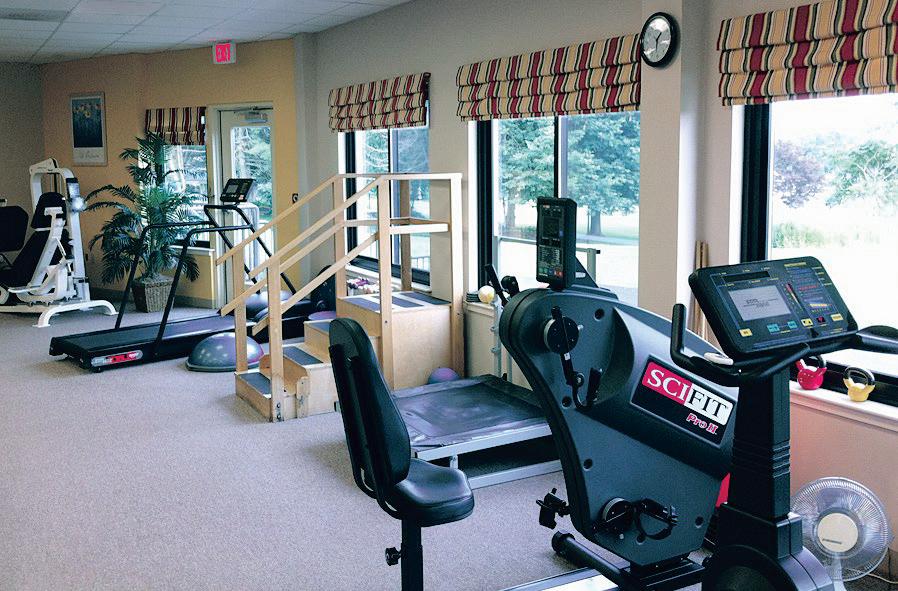Special museums Autumn

















Prima CARE has elevated women’s health by enhancing the breast screening experience. Our state-of-the art G.E. Senographe Pristina™ mammography system is designed to be the most effective and comfortable weapon in the fight against breast cancer. Its 3-D digital images allow us to better identify suspicious areas, and you no longer need to fear the pain of past examinations.
Breast cancer is the second leading cause of death among women. Early detection is of utmost importance, as the 5-year relative survival rate is 99%. Early detection does save lives.
Now is the perfect time to prioritize your health and schedule your mammogram. Ask your primary care provider or call (508) 646-0006 to schedule.

Diagnostic Radiology
289 Pleasant St, Suite 101 Fall River, MA (508) 646-0006
Like us on

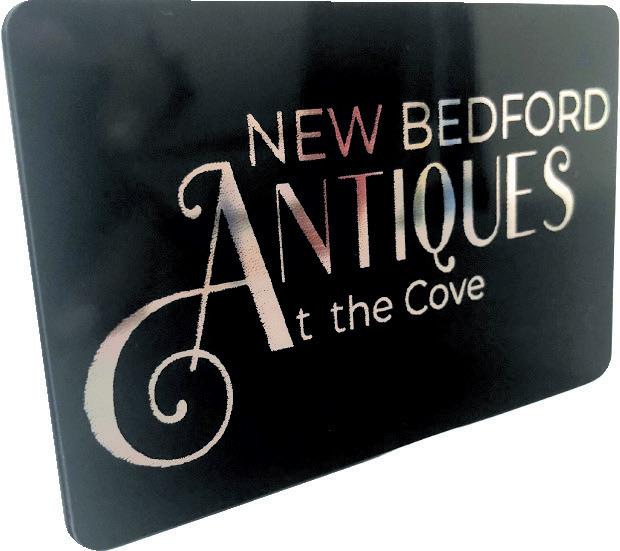


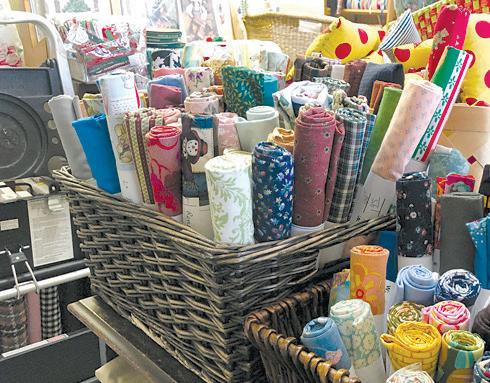


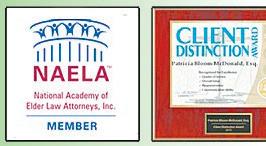

Like these patients, your life may depend on going to a center with the ability to care for any cardiac emergency, whether it’s cardiac surgery or advanced coronary interventions. The Heart and Vascular Center at Charlton Memorial delivers the most advanced, comprehensive cardiovascular care anywhere. Staffed by a cardiac critical care team, plus a 24/7 heart attack response team, we provide care that saves lives. To learn more, contact your nearest Southcoast Health cardiology office, or visit southcoast.org/heart.


Does world-class cardiac care save lives? You’re looking at them.
and made regularly available week after week.
The plan is a win-win for farmers and consumers. Consumers are assured to receive fresh produce, while the farmers can rely on a stream of income to contin ue to grow and cultivate their operations. “No shortages here if we plan ahead!” says Bishop.
All products can be ordered online directly from the farm’s website, gnarlyvinesfarm.com.
By Rona Trachtenberg priMe seasoN
The Bishops’ rapid assimilation into the South Coast is best shown through their recent project with the Coggeshall Farm Museum in Bristol. When the farm learned of the Bishops’ efforts in sus tainable agriculture, they invited them to their grounds at Colt State Park, where a new barn is being constructed.
Due to the construction, Coggeshall Farm’s 48 acres we lain fallow. They of fered the land to the Bishops.
5 unmissable events


Now, Bishop splits her time between the Tiverton farm and the Bristol loca tion, where she is using pigs to reclaim overgrown land and birds to rejuve nate the pastures. Back at home, she is focusing on raising turkeys in time for Thanksgiving. The fowl thoroughly enjoy living in pasture and freely gambol under the open sky (except for when Bishop is shielding them from predatory birds).
As much as the Bishops pride them selves on farming naturally, there are harsh realities that come with shirking modern shortcuts.
For one thing, Bishop has largely managed the labor-intensive opera tion of Gnarly Vines by herself, and is always looking for ways to increase her efficiency.
museums
herbs
But even old-fashioned sensibilities can leave open space for forward thinking. The farm is collaborating with robotics students at Johnson & Wales University in order to develop automated solutions to help small farms.
o N the C over: The Old Colony YMCA Taunton Branch is remaking itself to better serve its community and to create a center for growth and collaboration. Learn more about this revitalization by turning to page 10 or by visiting oldcolonyymca.org.

“It can’t totally be the old way,” Bishop says. “It has to be different. We must use technology, but we cannot sacrifice quality!”
That difference is apparent from the first bite.

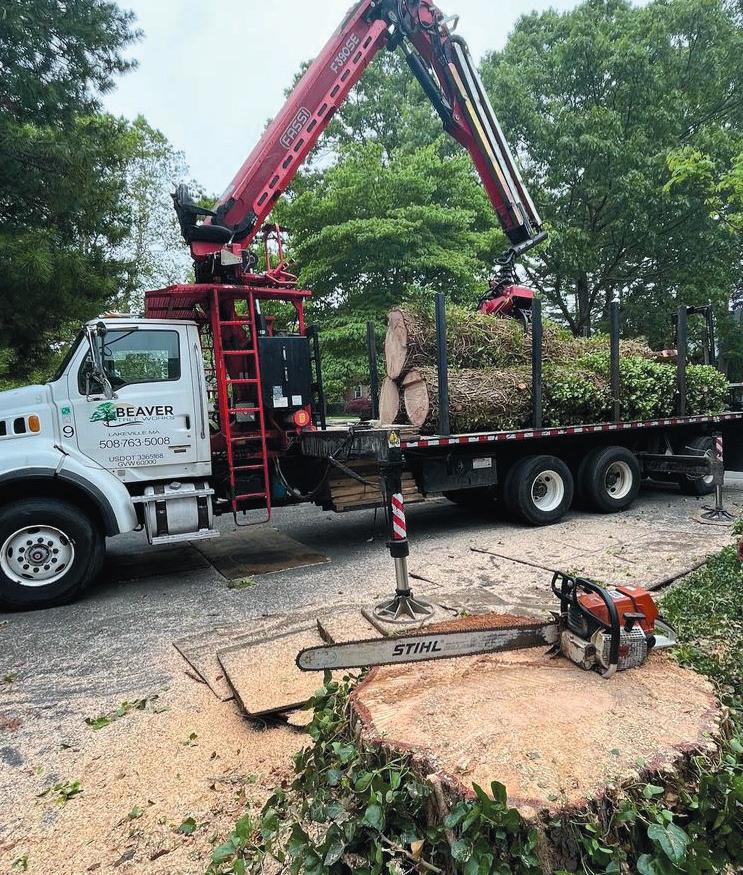





t he M attapoisett MuseuM is a uNiquely vibra N t plaCe to visit.
MiChael J. deCiCCo
Casein point: the Mattapoisett Museum. It’s a uniquely vibrant place to visit at its 5 Church St. headquarters, the former Mattapoisett Christian Church. You’ll find not just displays of cultural and historical mate rials relating to Mattapoisett’s heritage; you’ll find variety, including readings and talks by local historians and authors, silent movie nights, open mic nights fea turing local poets and musicians on tra ditional instruments, as well as art exhibits and workshops.
“It’s because we want to be a commu nity place,” Museum Director Jeff Miller explained, “a community resource. We want to offer things that will appeal to different people. Our focus is still his tory. But we look to offer something to people not as interested in history as they are in, say, the performing arts. Our goal is to enrich the whole cultural life of Mattapoisett and the region.”
The organization that started as the Mattapoisett Historical Society featured mostly talks on historical topics when it
opened in 1958. It was around the time Miller became director in 2015 that things started changing. Seth Mendell, son of one of the museum’s founders Charles Mendell, was handling the his torical lecture duties. Under the younger Mendell’s leadership, the organization decided to introduce musical events.
In 2017, the first such event, a concert by Issac Taylor, a folk singer/songwriter and James Taylor’s nephew, was a suc cess. “And we made some money,” Miller said. “So we did a few more of them.”
The next big museum-sponsored music event was a festival to celebrate its 60th anniversary in 2018, with six different acts performing in and around the museum grounds.
Around that time, more new members joined the museum and became inter ested in further broadening the program ming. The decision was made to change the organization’s name, from the Mattapoisett Historical Society to the Mattapoisett Museum.
Why the name change? “‘Historical
Society’ elicited a conservative view of what we offer,” Miller said. “We wanted to be more broad in our approach; offer culture, not just history.”
The new plan became a successful one. COVID pandemic shutdowns sent museum programming online, but in 2021 the museum re-emerged with more vibrant programming than ever. In the spring of 2021 the most noteworthy of this new programming began when Jeff Angeley, a music teacher and talented local musician, was looking for a place to display his and others’ musical talent. He became the MC of the open mics that are nowadays held regularly in the muse um’s main gallery.
In 2022, the museum is a place for open mics of music, poetry and comedy, author readings, art exhibits, craft and other educational workshops such as one that taught children theatercraft, monthly movie nights (presented out doors in warm weather), and walking tours of Mattapoisett.
Here’s what should interest people

about the history of Mattapoisett itself, Miller added. Town shipyards built the Acushnet, the ship Herman Melville sailed on that inspired his writing of his clas sic novel Moby Dick, and the famed Wanderer whale ship. Mattapoisett evolved into a port town known for building merchant and whale ships after it separated from the Village of Rochester to become its own town in 1852.
Miller said they are looking to expand the walking tours beyond covering just the neighborhood around the museum facility. And they are always looking to expand what activ ities they offer the community. For more information visit mattapoisettmuseum. org.

You should also put on your list the Fall River Museum of Contemporary Art, at 502 Bedford Street, on the ground floor of the historic granite building of Merrow Manufacturing.
Opened in October of last year, this museum prides itself on displaying the most contemporary pieces the national and local art world produces, said Harry Gould Harvey IV, co-founder with his wife Brittini Ann Harvey.
“My wife Brittini and I are both contem porary artists,” Harvey explained. “I was born in Fall River, worked in New York as a photographer. Years passed and I saw a need and a responsibility to start a
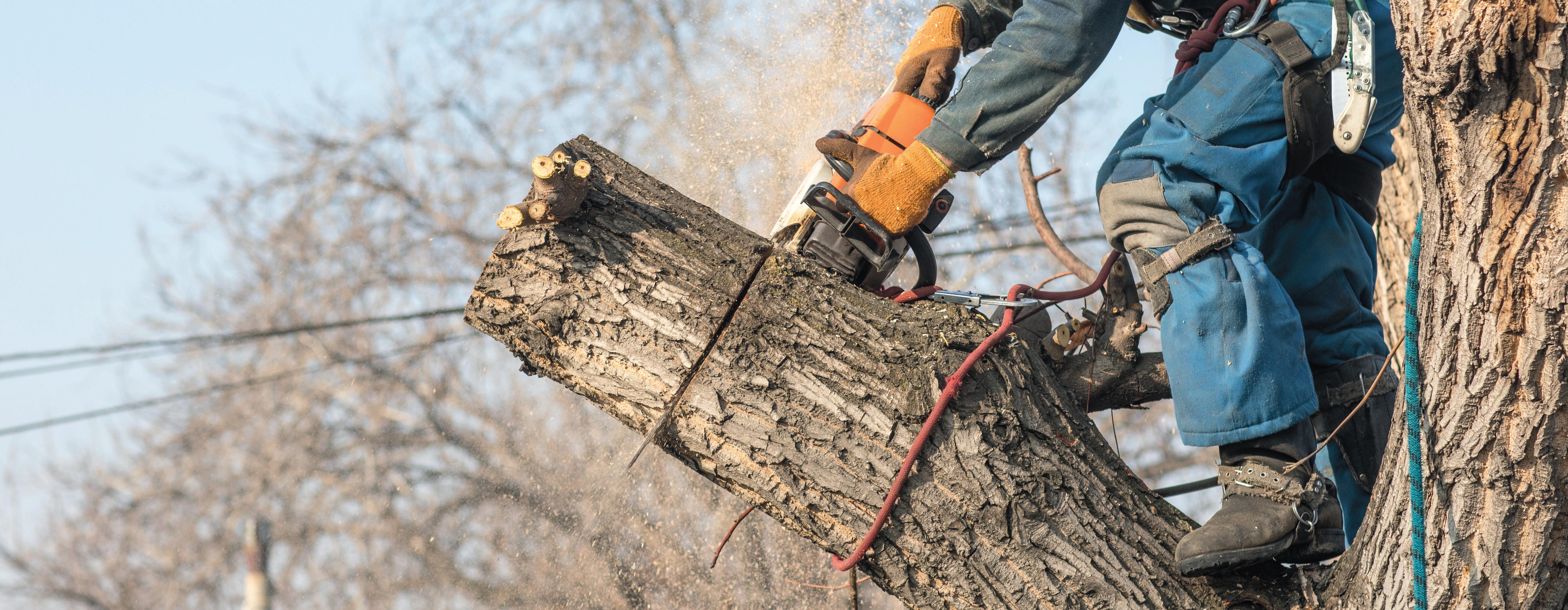
museum in Fall River that better encapsu lates the world that contemporary artists live in today.”
The museum’s cre ation, he noted, was supported by FABRIC Festival, an organiza tion started by the family who owns and operates Portugalia marketplace in Fall River. As co-founders of the museum, Harvey said, he and his wife “work with students and contem porary artists to cre ate a hub of innovation. We use art to make new con versations legible, we invite students from partnering institutions to make art amongst and with world-class globally exhibiting artists. We do everything from workshops to projects in vacant storefronts to stimulate and question how it is that art can better serve a com munity like Fall River.”
The art that the museum has offered so far has included mixed media displays, paintings, photography, video, and per formance art. While the museum is cur rently undergoing some re-construction of its physical location and space, it will re-open in November for an exhibit in cooperation with Fall River Durfee High School and the UMass Dartmouth’s Studio Art Foundations program.
The students in these programs will have full access to the museum space to exhibit their work, Harvey is proud to note. Artists from outside of Fall River will come in and teach these young stu dents more about today’s contemporary art.
“We want a ‘pollination’ of these stu dents to the contemporary art world,” he said. “Pollinating them to think more broadly and interconnectivity about how art can stimulate not only an individual’s experience of art but also a whole com munity’s experience of art,” he said.
Visit the museum’s website at frmoca. org or on Instagram at @fr.moca.

MiChael J. deCiCCo has worked as a writer for over 30 years. He is also the author of two award-winning young adult novels, Kaurlin’s Disciples and The Kid Mobster. He lives with his wife Cynthia in New Bedford.
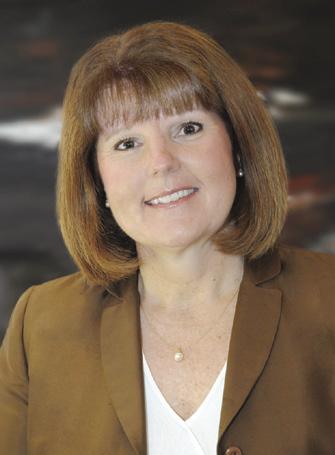

Opened in October of last year, this museum prides itself on displaying the most contemporary pieces the national and local art world produces, said Harry Gould Harvey IV, co-founder with his wife Brittini Ann Harvey.

The New Bedford Whaling Museum is the hub for science lovers, whale skeletons, historical and cultural exhibits, the country’s longest painting, and things for kids to do galore, making it a great place to spend a long weekend or winter break afternoon. Even if you’ve visited before, the Museum just reopened their Cook Memorial Theater, and it’s now updated to show visually stunning 20-minute 3D movies. Kicking off their immersive theater experience, Big Blue Pictures, are Oceans: Our Blue Planet and Antarctica: On the Edge. With daily film showings and recyclable 3D glasses, it brings a uniquely educational form or entertainment to the region and it’s the first (and only) 3D theater on the SouthCoast. For more info, visit whalingmuseum.org
St.Anthony’s Cathedral in New Bedford , boasting one of the tallest steeples in New England and a breathtaking interior, will be hosting two musical events to help raise funds to restore the church’s custom 110-year-old pipe organ. On Octo ber 16 at 3 p.m., Peter Krasinski will perform a recital on the organ. On December 18 at 3 p.m., there will be a Christmas concert with the Spirit of St. Anthony Choir. For more information, visit musicatsaintanthonys.org

Until November 5, visit the Narrows Center for the Arts at 16 Anawan Street in Fall River to experience “Three of a Kind,” a unique exhibition that “highlights the unyielding, metallic beauty of sculpture, glasswork, and reconstructed musical instru ments.” Featuring the works of Anarchestra, along with Fall River locals James Reitzas and Barney Zeitz, the artists’ chosen media culminate into something greater than the sum of its unique parts. Admission to the gallery is free dur ing regular gallery hours: Thursday through Saturday from 12 to 5 p.m. For tickets and more information visit narrowscenter.org




When completed, Old Colony YMCA will have the capacity to serve 265 children every day in its child care and school age pro grams. The entire scope of the $1.5 mil lion project includes: dramatically expanding its capacity to provide safe affordable child care; providing a more family-friendly welcome center; adding new strength and cardio equipment; renovating its 40-year-old gymnasium; creating space for a teen center; and reju venating the locker rooms.
According to Senior Executive Director Roman Davis, “This is not just an invest ment in our YMCA. This is an invest ment in the City of Taunton and the people who live here. We’ve been a part
of this community since 1894, and we will be here to support generations to come.”
The centerpiece of Old Colony YMCA’s renovations is the redesign and addition of two new childcare classrooms that will increase access to safe and afford able childcare. Historically, Old Colony YMCA provides scholarships or financial aid to 83% of all children in its pro grams. Numerous studies have shown that when young children receive highquality early education in a stable, safe environment, it builds a strong founda tion for learning and emotional develop ment. These positive experiences often help children succeed and overcome

adversity, including those caused by trauma and poverty.
The Commonwealth of Massachusetts has the second-most-expensive child care market in the United States. Many families routinely pay upwards of $20,000 a year for care for their young children, which is the equivalent of a second mortgage for some families and more than the cost of public college tuition for others. In a city like Taunton, the costs of childcare often serve as the lynchpin for the community’s economy. If parents are unable to go back to work because child care costs are too high or because there is no child care, the com munity will suffer. Moreover, children
will not have access to important nur turing programs.
Taunton’s size does not make it immune to the forces that contribute to social vulnerabilities found in larger cit ies. Unfortunately, as the city has strug gled, children have had fewer resources and opportunities. The need for access to childcare is at an all-time high, but availability may be at an all-time low. This project will help the Old Colony YMCA meet demand for accessible and affordable childcare.
“What makes the YMCA different is that no one is ever turned away because of their financial circumstances,” says Davis. “We will always work with fami lies to make sure their child has access to these programs. Plus, families can also access other resources here, like behavioral health services, healthy food, mentoring programs, and much more.”
A new welcome center and Kid Zone play space send the message that the Old Colony YMCA is a friendly environment for kids.By knocking down walls and reconfiguring space, it will transform its space into a bright, engaging open

concept with a vibrant play space for children.
Old Colony YMCA’s current gym has seen its fair share of use but after 40 years it needs a major renovation to keep up with the needs of the community. This newly refurbished gym will serve as a resource for teens and kids who can easily spend an afternoon at play.
Meanwhile, the Teen Center has been identified as a priority for the City of Taunton. The Taunton Teen Center, the first portion of the project to be com pleted, offers middle and high school students a convenient and safe space to congregate and hang out with friends, play in the gym, and work with the Y staff to develop programs to benefit the community. The Teen Center provides teens with the opportunity to be inde pendent, socialize with friends and belong to a community solely focused on them.
Ultimately the Old Colony YMCA hopes that these updates and renovations will result in increased family engagement, safety, mobility and ability, and social interaction for young and old alike.
To learn more about the Old Colony YMCA at Taunton, visit oldcolonyymca.org.
For 30 years, Vincent J. Marturano pioneered a new kind of YMCA –not a Y centered simply on gym and swim, but a Y centered on families, children, and social service. The newly renovated Marturano Youth YMCA in Brockton is named for him and his wife Nancy.
Marturano has served as President and CEO of Old Colony YMCA since 1992 and has served the Y movement for almost a half century. Marturano, who steps away in February, was instrumental in turning the YMCA into the region’s largest social service orga nization. Time and time again, when the state needed to reimagine services for vulnerable youth, they turned to the Old Colony Y. As a result, this Y is known for provid ing a mix of services that are not only unique in Massachusetts, but also across the country. Now, doz ens of human service programs –including mental health, family shelter, mentoring, gang interven tion, workforce development, and residential care – thrive as a result of Vinnie’s unwillingness to accept the boundaries of a traditional YMCA.

Historically, Old Colony YMCA provides scholarships or financial aid to 83% of all children in its programs.
“He changed the definition of what a YMCA could be, and now others across the country are following his lead.”
– Eli Florence, Chair of the Board of Directors, Old Colony YMCA
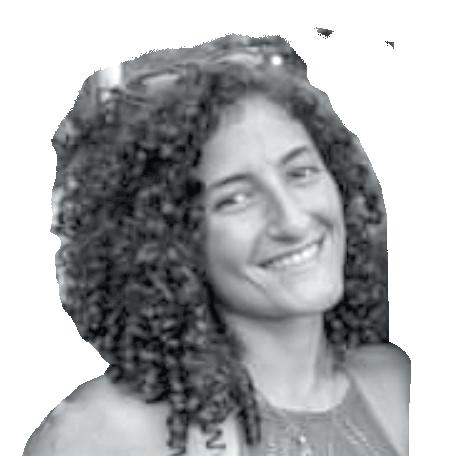
You know the signs: the way the air smells first thing in the morning, the way the temps dip a whole lot quicker when the sun sinks below the horizon. Perhaps it’s a time that brings you joy. Or perhaps a drop of trepidation. This is where our seasonal rituals come in to help us make a graceful transition. Back to school and warm layers, steeping fragrant teas and simmer ing hearty stews. Turning towards familiar practices brings a sense of grounding to times of transition, and the shift from summer to fall is no different.
It was once said by the famous European herbalist Maurice Messegue that “a single plant is a medicine chest unto itself.” During this time when you are adjusting to new routines and weather patterns, the last thing you need is to add the task of filling an entire medicine cabinet with novel herbs. (Although if you’re into it, it could be a whole lot of fun!) But creating a simple herbal practice is a timeworn tradition that makes embrac ing autumn a joy. Herbs work in complex ways. A single herbs offers a multitude of beneficial compounds and
unique actions, or ways of working within the body, that allows each plant ot serve us in countless ways.

Here are a handful of herbs that can serve as a source of inspiration this fall. This list is by no means definitive, but rather a beginning guide to herbs that are easy to find, simple to use, and hit many of our main autumn needs: immune support, digestion, circulation, respiratory health, and relaxation. Who wouldn’t want to stay warm, well, and tranquil when fall rolls around? If that sounds enticing, these five herbs are a great place to start!
The entire elder plant has long been revered for its seemingly magical ability to heal. We now know that it’s not only elder magic that heals us (though who’s to say it’s not a part of the mys tery?) but also the plentiful protective compounds in those deep purple berries. Specifically, elderberries are rich in “anthocyanins,” phytochemicals that exhibit antioxidant, anticarcino genic, immune-stimulating, antibacterial, antiallergic, and antiviral properties.
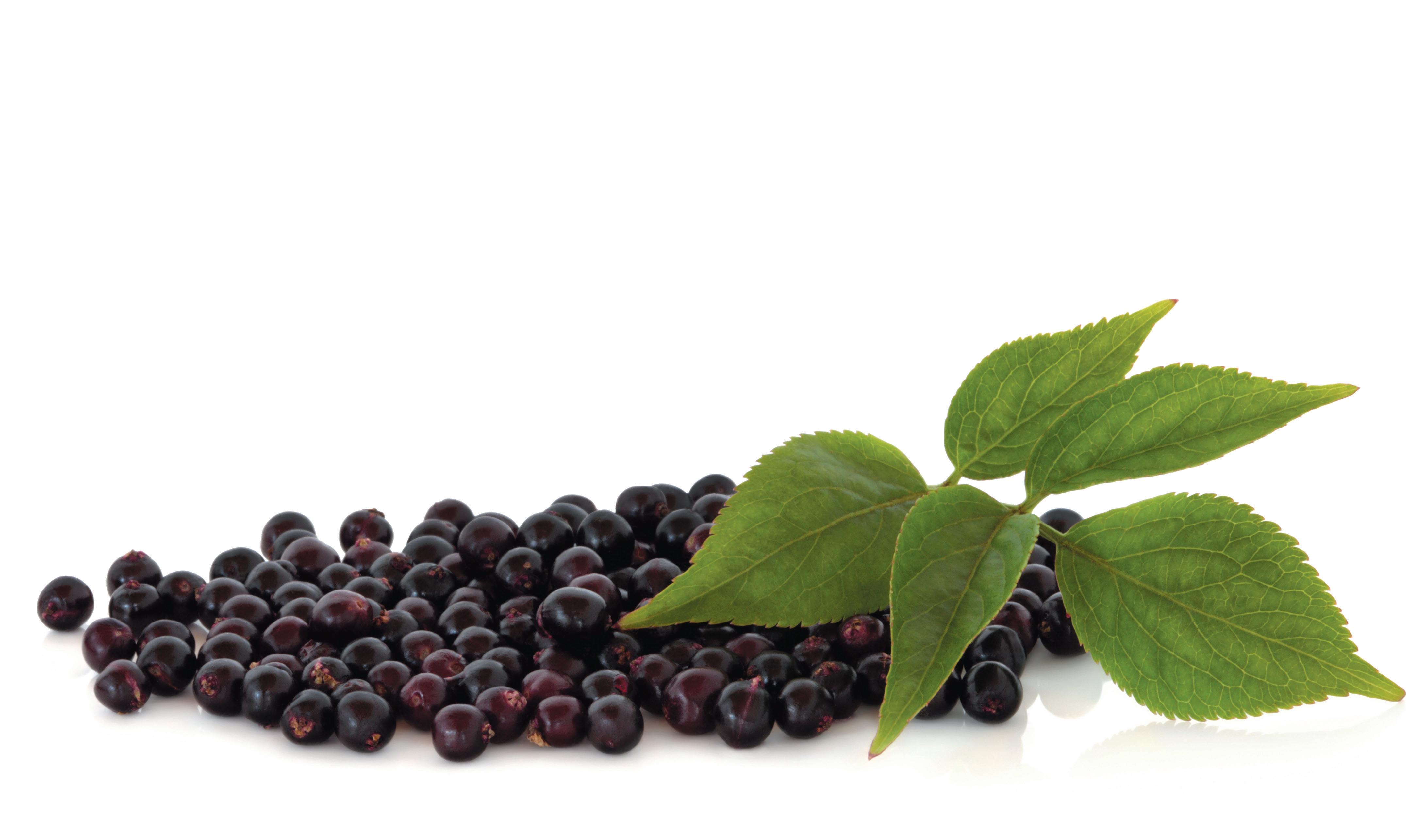
While we’re just starting to feel the shift, the wheel of the year is turning yet again towards autumn
Layman’s terms? The berries help cells to identify and expel pathogens before they have a chance to take over your system. They’ve also been shown to reduce the duration of viral symptoms, such as fever, headache, and congestion. No wonder moms around the world keep a bottle of elderberry syrup in the fridge at all times! For a local, herbalist-crafted source, check out Town Farm Tonics (online and in local stores). If you’re keen on making your own, the internet is full of great recipes. Elderberry syrup is the traditional way to enjoy the berry’s benefits as it’s delicious, effective, and easy to use. But you can just as well simmer to the berries for a quick tea for the same immune support.
This wild shrub is native to North American and Europe, so with a little patience and know-how you can forage your own berries. They’ll be our local variety, S. Candensis, which contain all the same compounds as its more well-known European cousin. Just make sure that you only take what you need, leaving enough for the plant to reseed and feed the birds. Leave behind any unripe berries; they’ll hurt your stomach and won’t contain the medicine you’re looking for. And should foraging not be your cup of tea, the plant is easy to grow (wait until spring). Or just purchase dried berries at a nearby herb shop or online store. Make sure to buy organic – nearly all elderberries are imported, which means they’re likely irradiated and could contain toxic pesticide residue.
This biennial weed is well known as a liver healer, detoxifier, and nutritive herb that is rich in inulin
and supports your micro biome. When our diets are changing towards heavier fall foods, this is a great time to incorporate Burdock for digestive support. Enjoy burdock tea regularly for digestive tract soothing and support of cell-level metabolism. With all these benefits, burdock happens to be a renowned food plant in Japan, where herbalism is quite popular and the roots are cultivated to grow very large. The wild burdock found around these parts will likely be too small and tough for eating. But they’ll be perfect for simmering into a hearty, nourishing tea! You want to dig the medicinal roots from the first year plant of this bien nial. A first-year burdock is easy to spot because it won’t yet have sent up it’s giant stalk – that comes in year two. Before that stalk grows, all of the plants’ energy is in the root, making it the perfect time to harvest. To harvest, simply get a long hand trowel or hori-hori to loosen the soil around the tap root. It grows deep! So you’ll want to do a lot of digging before pulling it up. Once it’s extracted, snip off the top leaves and scrub the root clean. Burdock roots preserve best when chopped into half-inch pieces and oven-dehydrated at 300 degrees for about 30 minutes. Brewing burdock tea is as simple as simmer ing 1 tablespoon of roots in 1.5 cups of water for 15 minutes. The same can be done with the fresh root. Strain and enjoy with honey. Can’t find much Burdock around your usual stomping grounds? Keep an eye out for Dandelion or Chicory. These two medicinal wild roots are also abundant. They offer many of the same

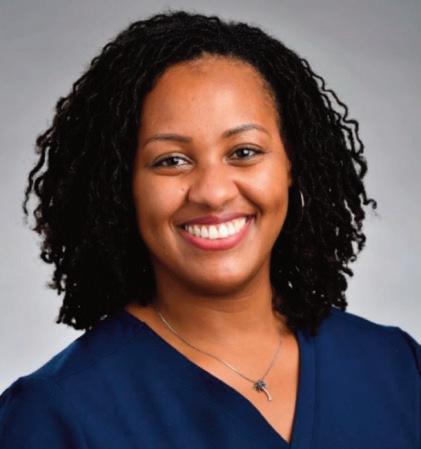




actions and can be used just as well for teas.
Ajusting to cooler temperatures is much easier with the help of warming, circulatory supportive herbs. While ginger is not a native plant that one can forage, it’s luckily plentiful at grocery stores and irreplaceable as an herbal ally. Increasingly chilly days after such a hot summer can cause tension as we brace against the cold, leading to stagnation. Ginger supports healthy circulation of blood throughout the body, which helps us move through that tension. In this way it keeps our extremities warm, whether sipped as a tea or added as a powder to a warming foot bath. The effect of keeping blood moving properly from nose to toes has the effect of not only lifting our energy, but our spirits too! Blood is a vital force, and a warm body in autumn nurtures a warm spirit. Ginger is also gently immune stimulating, fending off viruses that proliferate in the fall. Along with adding ginger to soup and
simmering the grated root for a spicy tea, ginger syrup is a fun way to incorporate this helpful herb. No perfect ratios are needs. Just simmer grated ginger to your desired strength (the spicier the better in this case), strain, and for one part water add one part raw sugar or honey. Refrigerate this tasty concoction and drizzle into oatmeal, pancakes, tea, and even cocktails for a flavoral, functional boost!
Did you know that your kitchen cabinets are full of herbs long revered for health support? Even the word “recipe” itself comes from the French word for “prescription.” Our food is our medicine! Especially in these coming months, add onion to as much as you can for the vitamins and sulfurous compounds that keep pathogens at bay. We all know the celebrated immune benefit of vitamin C. Onions happen to be a great source of this nutrient, along with vitamin B6 and potassium, critical nutrients for all cell functions. Those sulfurous compounds are what give onion that characteristic

eye-stnging ability. Those same compounds help to loosen and expel mucous in a congested respiratory system, especially when the onion is raw. One little known trick? When a hacking cough has you all but exasperated, stick a tiny piece of garlic in your upper lip. Sure, your breath won’t thank you, but your lungs will! Over time that onion will help to ease your spasming cough and loosen phlegm. A simple method would be enjoying ample onions in salads and soups. Or, try your hand at an onion syrup. For higher nutrient content in those valuable onions, make sure to shop local. Organic and natural farmers are more likely to maintain healthy soils, which translates to nutrient dense onions. The grocery store variety, even organic, won’t be nearly as nutritious as a locally grown onion! Check your local farmer’s market or SEMAPonline.org for a list of local farms and markets.

When some think fall, warm bowls of oatmeal full of autumn apples and warm cinnamon come to mind. Often, our littleconsidered seasonal rituals have health benefits behind than, unbenownst to the average person. Turns out oats offer much more than sustenance. They’re a nervous system super food! During any season of transition, emotions may run high, so there’s no time like sweater season to nourish those nerves. As a food, oatmeal is rich in complex carbs and fiber, and higher in protein and fat than most other grains. They are also very high in many vitamins and minerals, like magnesium, all of which help regulate the nervous system and keep hunger at bay – a sure
fire way to frazzle nerves. Used as herbal medicine, oats come in the form of oat straw (the first grassy shoots) and oat tops (the young oat grain seed that becomes oat meal). Oat straw and tops are especially nerve loving, known around the world as the very best way to strengthen nerves overtime and combat long-standing nervous exhaustion. They contain compounds that literally feed and rebuild the nerves, cultivating stamina and emotional resilience over time. Oatstraw and oattops are best used in combination. For nutrient dense brew, add 4-6 tablespoons of the herb mix to a mason jar, fill with just boiled water and cover for an overnight steep. Strain in the morning and enjoy daily for long term restoration.
There is so much more to each of these herbs than could fit on a few pages. Remember, each herb is a medicine cabinet unto themselves. Pick one herb and start to explore. How many ways can it be used? How does it make you feel? What surprised you? Learn ing through experience is the very best way to build up your knowledge as a home herbalist. It’s a practice that we’re not all that far removed from. A practice that is both empowering and fun, especially when communing with plants outdoor is on pause for a season or two. *Statements in this article are for educational purposes only. This information is not intended to diagnose, treat, cure, or prevent any disease. Consult with your physician before starting something
time between nonprofit development, freelance writing,


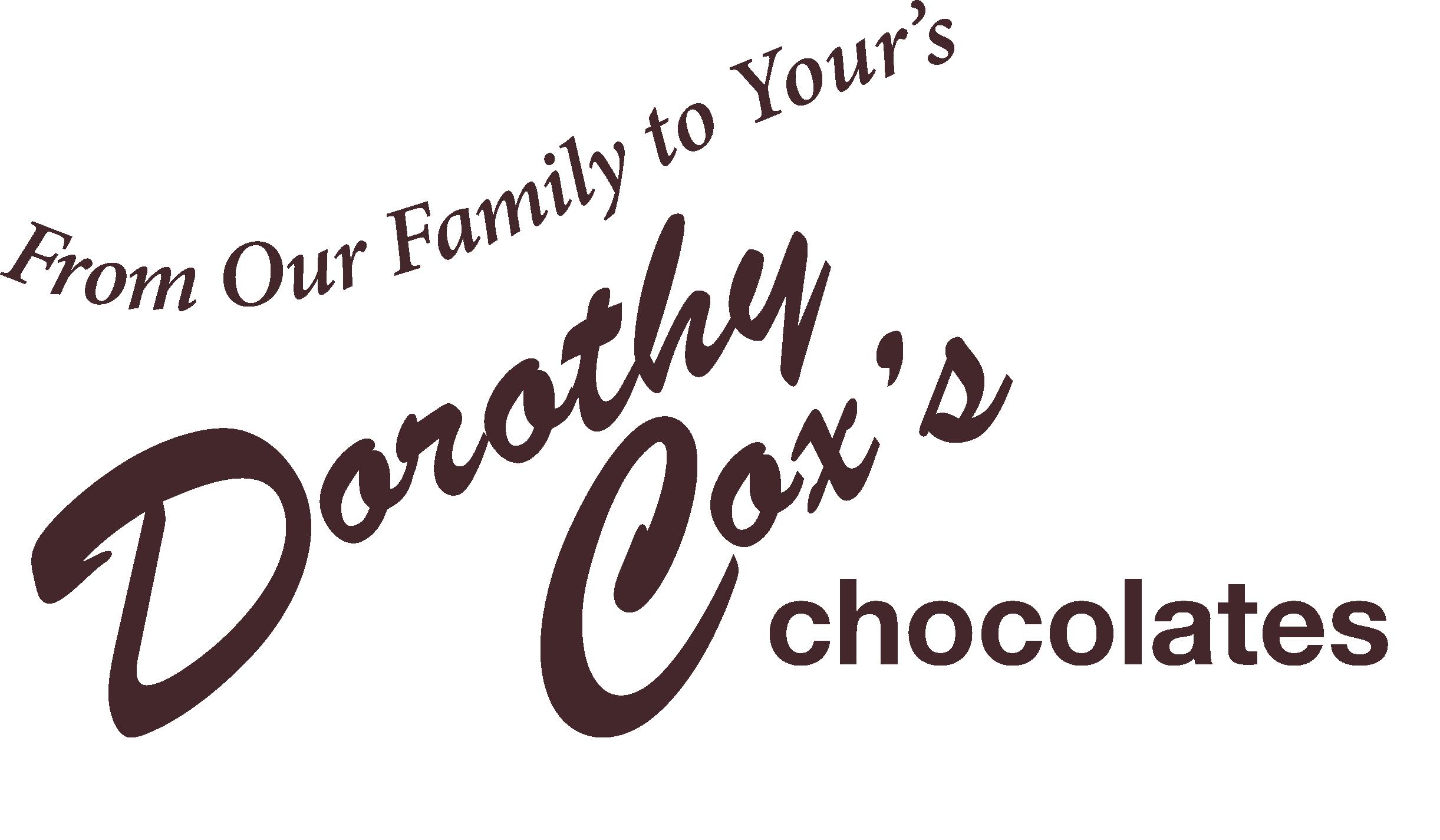
herbalism. She is the founder of Bilo Herbs. In all that she does, Carissa
to build community
to
well.
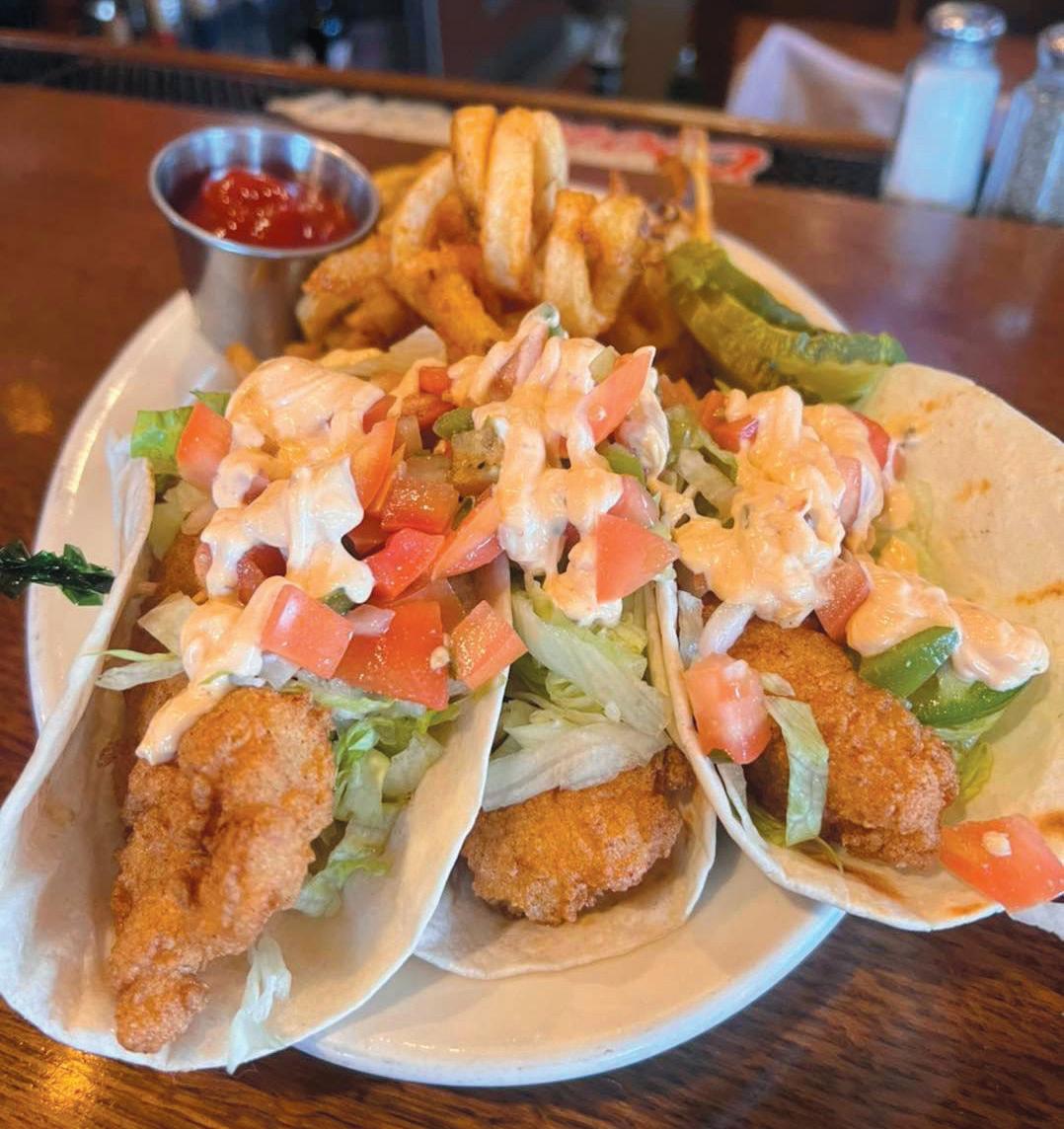
The couple’s blissful journey started two and a half years ago when they spotted each other on Zoosk.com – an online dating site known to be popular among adults 50+ years of age.
When Deborah Vigeant and Thomas Conway connected, they learned that they shared a passion for lighthouses. Vigeant, who is a retired advertising account executive and a certified dog trainer, had visited light houses all around Rhode Island while she had lived in Barrington. Thomas appreciates the history, structure and functionality of lighthouses, as he was an elevator constructor for 33 years and has served as the Commonwealth’s South Coast Elevator Inspector for the past 11 years.

“I have always wanted to live in Mattapoisett,” said Conway, who first visited the quaint, nautical town three decades ago and placed living there on his bucket list. As the couple’s relation ship blossomed, they decided to pur chase their dream home in Mattapoisett. Then, they began contemplating loca tions to get married. Their first and only choice was in front of the very photo graphic Ned’s Point Lighthouse.
Their next step was to visit the Mattapoisett Town Hall to secure a mar riage license. Vigeaunt said, “We were given a list with the names of three local justices of the peace to consider. We googled each one, read their bios, and
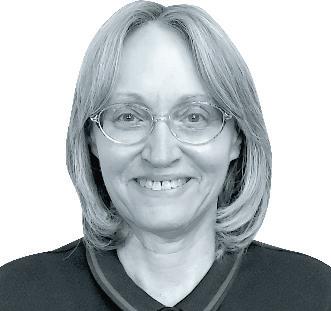
liked best what we learned about Joseph F. Dawicki III.”
Dawicki was approved by the Governors Council and appointed a jus tice of the peace by Governor William Weld in 1991; he is a chaplain for the Inter Church Council of New Bedford and on their Board of Directors; a USCG Auxiliarist for 33 years; a Mason for 27 years; serves on the Advisory Board for Greater New Bedford Voc Tech for 24 years; and ministers to people with addiction. His career path was with EMS and firefighting. “He seemed like a very good man,” said Vigeaunt. “We felt an immediate connection with him, although we had never met him.”
While getting a haircut from Jodi Lynn Bauer, owner of the Clipper Barber Shop and Mattapoisett’s Vice-Chair Selectwoman, Conway learned about the town’s monthly Mishawum Club social gatherings, where men who were new residents and local professionals net worked and met. When Conway attended his first meeting, he unknowingly just happened to sit next to Joseph F. Dawicki III. “We felt like we already knew him and liked him from our research,” said
an enthusiastic Vigeaunt. Discussion ensued and it was decided that Conway and Vigeaunt would be married at the top of the lighthouse instead of just in front of it.
Before presiding over each wedding, which Dawicki has done 79 times over the past 31 of years, he interviews the prospective couples. “I was amazed by the level of detail, interest, and depth of the questions we were asked,” exclaimed Vigeaunt.
“These weren’t your average, run-of-themill questions,” added Conway.
“Joseph put so much energy and detail into the encounter,” continued Vigeaunt. “It made us feel at ease because he was taking this so seriously. I think there was a little subliminal pre-marital counseling going on, but that was okay. You could see that this was a vocation for Joseph. He wasn’t asking to be paid for his ser vices, just that a donation be made to the Ned’s Point Lighthouse Restoration Fund. As the interview ended, we were confident that Joseph would create a unique and personal set of vows for us and give us a very dignified ceremony.”
Dawicki explained his process. “Each ceremony is written specifically for that couple. No two are the same. I did
research with manuals, such as ‘How to perform a wedding ceremony’ and as time went on, with experience, I created my unique set of interview questions. It is very important to know the couple if you want to make the ceremony personal and special.” He added, “I truly feel per forming this service is a calling and it uplifts me spiritually. I find it very rewarding to be a justice of the peace and go the extra mile to make each couple’s wedding special and memorable.”
Dawicki has served as a deacon in two different churches in the past. Currently, he attends the Mattapoisett Congregational Church, where he led a Bible Study on Zoom during the Covid19 shutdown. Dawicki will nonetheless perform wedding ceremonies for people of different faiths. “As a chaplain and a justice of the peace, I bring no judgment when asked to do a ceremony. I do research each person’s religious back ground and include what they desire. The wedding is about the couple, not me. If they choose not to include any religious prayers or readings that is the choice of the couple and I do accommodate their wishes.”
Saturday, August 6 dawned bright, with blue skies, 89 degree temperature, and wind SSW at 16 knots. The happy couple arrived at Ned’s Point Lighthouse at 5 p.m. Their photographer was ready with her camera. They were all greeted by Dawicki, looking smart and official in his full USCG Auxiliary Dress Blue uni form as he unlocked the lighthouse and escorted all three inside.
As the couple ascended the 32 granite circular steps, they were in awe of the


184-year old building. Vigeaunt exclaimed, “I feel the soul of this old, beautiful structure.”
Conway remarked, “I feel the history of the men who built this important warn ing system that was born out of a great maritime need. It is a throwback from centuries. It is no wonder that it is on the National Registry of Historic Places.”
Once at the top, Dawicki positioned the couple in the lee of the tower to mini mize the high winds that still blew Vigeaunt’s hair a bit. The bride observed, “You have no idea how breathtaking it is to be so high above the ground and water. The 360 degree views are amaz ing.”
The groom added, “We were able to see Martha’s Vineyard and the Elizabeth Islands. Being up here has allowed us to feel like we are now part of the Mattapoisett community.”
Once the couple were formally married and safely escorted to the ground level, Dawicki handed them a keepsake binder containing the written version of their wedding vows and the service that they approved prior to the ceremony. Dawicki wisely advises each married couple, “In the future, when you have a bad day, read your service and remember why you got married.”
When asked whether they would rec ommend this wedding experience to oth ers, Mr. & Mrs. Conway agreed: “Absolutely, without equivocation. This is such a unique venue, intimate and stu pendous setting. It is nice to be alone at the top of our community. This was a priceless experience. Future couples will really enjoy getting married up here and especially if it officiated by Joseph.”
Dawicki added, “Spring and summer are very popular seasons for our large weddings in front of the lighthouse. I have even performed a ceremony on New Year’s Day. Very few have been mar ried at the top of the lighthouse, because of limited space. It is truly a special, per sonal and memorable experience.” Conway concluded, “Living in Mattapoisett, with 6,500 other happy souls, has exceeded our expectations. I am blessed to be living the finest years of my life here, at 65, with Deborah, my wonderful new wife.”
t ra C hte N berg is a freelance journalist, a Certified Nursing Assistant, a professional organizer,
a US Coast Guard Auxiliarist, who lives in Fairhaven.
buy your unwanted firearms and accessories.
households
unwanted firearms
may have belonged to yourself
family member
you’d
them legally removed
home
cash
earn
well.
come to


The weather is turning predictably cold. The leaves have fallen off the trees. You are almost done eating that leftover Halloween candy, and your Thanksgiving turkey is roasting in the oven. The music in all the stores, elevators, and radio stations are playing non-stop Christmas carols. Therefore, it is time for the jolliest elder male in your family to dust off his Santa suit and see if it still fits.
The weather is turning predictably cold. The leaves have fallen off the trees. You are almost done eating that leftover Halloween candy, and your Thanksgiving turkey is roasting in the oven. The music in all the stores, eleva tors, and radio stations are playing nonstop Christmas carols. Therefore, it is time for the jolliest elder male in your family to dust off his Santa suit and see if it still fits.
A quick online search of “How to become a Santa” brings up a plethora of resources such as a 3.5 minute
instructional YouTube video narrated by a British woman that is reminiscent of a Monty Python skit; a six-page Complete Guide to Becoming a Professional Santa, sponsored by Indeed.com; and a fourpage Ultimate Guide to Working as a Professional Santa Claus, published by the Penny Hoarder. Both guides offer free advice and advocate attending a Santa School – which is exactly what one of our local white bearded, senior men did this fall.
“So, you think it is that easy being a Santa?” queried Joseph F. Dawicki III,
who had been letting his white beard grow long since Covid-19 started in March 2020.
“Being Santa is more than just having a red suit, a jovial smile, and a deep laugh,” began the Mattapoisett resident, who has been perfecting the role since 2014. The Santa bug bit in 1980, when Dawicki purchased his first home. “I dec orated for Christmas and started collect ing Santa figurines. I always put effort into making Christmas magical for my children, as well as making sure they knew the true meaning of Christmas.”
“In the beginning,” explained Dawicki, “I learned as much as I could online, but I felt that I needed additional in-person training. I discovered the New England Santa Society, which hosts a Santa Camp at the Barbara C. Harris Camp & Conference Center in New Hampshire. I attended last year and it made me a bet ter Santa, so I decided to return this August 26-28 to gain more experience. I was joined by 60 other Santas, Mrs. Clauses, and helpers. The camaraderie was great – everyone wore a name badge that included where they were from.
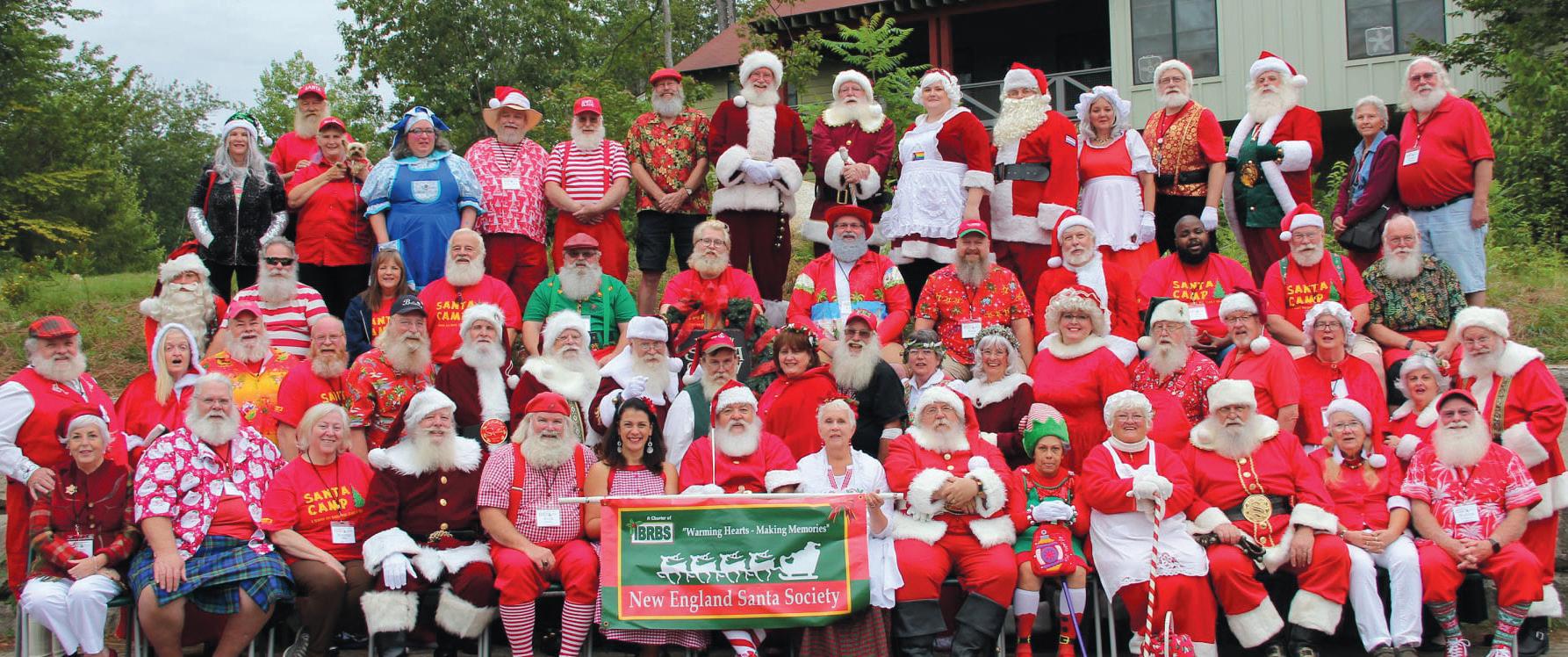
There were campfires every night and a lot of storytelling. I plan on registering next year when we will be learning how Santa can better interact with children with disabilities.”


Dawicki’s Santa always keeps two books with him: a special logbook, to record any pertinent information he hears, and a Naughty & Nice Book, to look up details from previous years for repeat customers.”
“On occasion, a child will share some thing sad with Santa,” explained Dawicki. “If they had lost a loved one, they sometimes ask if Santa can bring them back. This request requires empa thy and delicate handling. When a child asks Santa for a gift that is clearly too expensive for their parents, he answers, “Santa can’t give every child an expen sive gift, ask your parents for that.” Then, Dawicki tries to encourage par ents to keep the gifts from Santa simple, because “many children at school do not receive expensive gifts.”
When children ask Santa for pets, he cleverly answers, “Santa does not bring pets because they could freeze in the sleigh. A pet is a very important part of the family and should be chosen by the entire family, because everyone will have to assist in caring for the pet.”
Another interesting dilemma is when children tell Santa that their home doesn’t have a chimney. Dawicki has a creative answer: “Santa carries three keys; 1) The magical key can open any door, but it only works on Christmas Eve; 2) The key to the toy shop; and 3) The key to Mrs. Claus’s cookie cabinet. Santa can not eat every cookie left out for him in one night, so he brings the extra cookies home and every night Mr. and Mrs. Claus invite the Elfs for cookies and milk. One time when Santa forgot to lock the cabinet, the Elfs ate all the cook ies and got belly aches, so now Santa keeps the key with him at all times.”

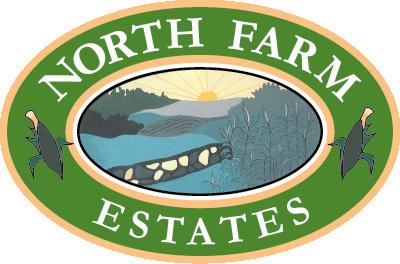

It is this kind of imaginative repartee, genuine emotion, and positive attitude that helps Santa connect with the chil dren and that allows the children to believe that they are talking to the real Santa.

Equipped with the tools and the tal ent, Dawicki starts practicing his Santa persona in early November. For exam ple, “Ho-ho-ho’s should be gentle, so no small children are frightened. Older children will sometimes ho-ho-ho with you with a louder tone.”
This past year, for health reasons, Dawicki lost 30 pounds. Instead of using a fake belly, he has a better plan: “I will promote good health to the chil dren.”
When asked if any local children rec ognize him behind his Santa outfit, Dawicki responded with a cute story, “Last year after my visit to my threeyear-old great niece, she asked her par ents if it was Uncle Joe. On Christmas day when she arrived for dinner, my beard had been shaved off and my nephew thanked me because it put that question to rest.”
Dawicki’s first Santa gig takes place right after Thanksgiving, with the New Bedford Marine Corp League’s Toys for Tots annual drive.“Home visits are always fun because it brings a special magic to the children,” said Dawicki, with a twinkle in his eye. “Last year, when a group canceled due to inclement weather, I became available and the Mattapoisett Museum immediately con tacted me to be their Santa for their eve ning event.”
For two months, at the end of each year, Dawicki looks forward to putting his heart and soul into being Santa. He does this as a volunteer, but he gladly accepts tips, which he uses to assist needy families during Christmastime. His personal spiritual compensation is “seeing the smiles and happiness on the faces of the children and the adults.”
“Being
Tripping down memory lane is somewhat of a double-edged sword at a certain age: they are a warm reconnection to times lovingly lodged in our hearts, but are also a cold reality check as we look back at the years stacking up like cord wood behind us while those ahead crackle like kindling on their hurried rush to ash. Reunions tend to hammer that home. Here we are at an age you could scarcely have imagined being that day you got your diploma. That svelte image of you with a full head of hair was just you, not some thing to give you any pause. You looked in the mirror, and looking back was someone 17, young, forever, frozen in a time that despite its often crushing confusion, was where you’d always be.
paul K a Ndaria NBut youth, as we come to realize, is per haps the cruelest of life’s filters, clouding reality, year by year, decade by decade. That image in the mirror of a paunchy old bald man cannot be you, no matter how much your 17-year-old self still dwells within, stubbornly and blessedly impish and whimsical.
I graduated from Seekonk High School in 1971. I attended my five-year reunion (big mistake), then my 20th (huge success), and not again until this year, stepping back in time to my 51stt on a crisp September night at the Pawtucket Country Club.
It was, in a nutshell, one of the best nights of my life, due in a huge part to the work of our classmate organizers, Debbie Allenson Cylke, Maureen Murphy Rego, Barbara Boucher Passerello, and Marilyn Monroe Southam. (It is no coincidence the best organizers tend to be women.) Seeing old friends like them with whom you can just pick up and carry on, those five decades apart evaporating on a smile and a laugh, is the true gold in these golden years.
Sitting in a room warm with memories is not a bad way to pass a chilly Friday night.
My buddies from our old days of sandlot
ball on Cole Street in Seekonk were there, kids-now-old-men like Keith, Todd, Tommy, Dave, and so many more; those I played football with, hung out with, par tied with, plotted lives after high school with, wondering what the years would hold and never imagining we’d live so many more of them because we, like most kids that age, were immortal.
Years weren’t a thing that would happen to us.
They did happen, of course. There was college or no college, marriage and kids, enduring devotion or divorce, careers you loved, careers you hated, there were deaths expected and deaths tragic, there was that often crushing confusion of life stretched far beyond our teenage years, with reunions giving us a wonderful place to share all that as well as our collective com mon memories of an innocent, sepiatoned time of our young lives we will cherish forever and foolishly thought would never end.
One of the best parts of a joyous evening: seeing a smattering of old teachers and guidance counselors, completely catching me by surprise because as I told a few of them who share my dark sense of humor, I honestly thought all my teachers were dead.
Happily, not all are, and here were people like Frank Mooney, legendary track coach who still coaches and whose name adorns the track at school, a history teacher who I told instilled in me an enduring love and respect for our past. There was Omer LeClerc, wise-ass teacher extraordinaire who unwittingly showed me the rewards of living a snarky life. There was James Kinder, a kinder teacher I’ve never met, patient to a fault with us in English classes. There was Nancy Dobie, no-nonsense but loving gym teacher. There were guidance counselors Bob Perreault and Ginny Gizzy, who worked in an office where my late mother was secretary for many years; they and the teachers told me what a beautiful soul she was.
And that was another edge to that sword I
feared from attending my reunion: trigger ing memories of my mom, alive and lov ing, as well as my dad, my grandparents, relatives and friends from a long-gone era of my life, those times with them growing warmer with each passing year yet no less painful to recall. I feared that yawning ache and sure enough, it came.
And I welcomed it.
On the drive home late that night, I passed through the south end of Seekonk where I grew up, the route memorized and effortless from so many years on it, past my high school, down Arcade Avenue by the dormant overgrown Firefly Golf Course, through Luther’s Corner where I got my first haircut at Murgo’s and my first job at Kinnane’s Drug Store, and toward where a Howard Johnson’s once stood, under the orange roof of which I worked on and off for years.
And as I approached Cole Street, I instinc tively flipped on my blinker, in that instant remembering home and wanting to turn and drive down that street, pull into the driveway, run inside that house, eat my mom’s leftovers and race up to bed across from the room my parents were sleeping in, waiting to protect me from being any where but there in the here and now and only the here and now, securely and for ever young.
I could not do that of course. I flicked off the blinker and kept going, crying warm tears at the memory of all that and awash in the nostalgic glow of one remarkable evening with friends I love and will never forget.
One thing I know with rock-solid cer tainty after all these years: you can’t live in the past. But so much of it is sweet enough to make you want to visit as often as you need. And that works just fine for me.
paul K a Ndaria N is a lifelong area resi dent and, since 1982, has been a profession writer, columnist, and contributor in national magazines, websites, and other pub lications.




